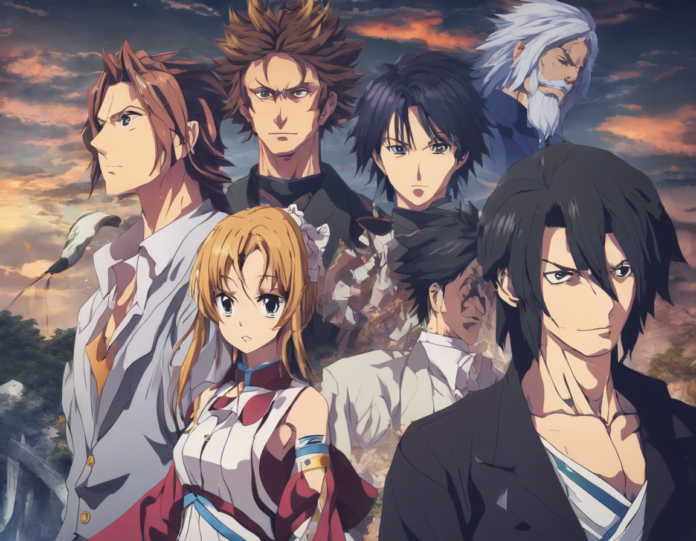Japanese anime has captured the hearts of audiences worldwide with its unique storytelling, vibrant visuals, and diverse genres. From thrilling adventures to heartwarming romances, anime has something for everyone. In this comprehensive guide, we will delve into the world of Japanese masterpiece anime, exploring its history, impact, popular genres, and iconic series.
The History of Japanese Anime
Japanese animation, or anime, has a rich history that dates back to the early 20th century. The first known Japanese animation was produced in 1917, with works like “Namakura Gatana” and “Momotaro, Sacred Sailors” paving the way for future anime creators. The post-World War II era saw a boom in anime production, with iconic titles like “Astro Boy” (Tetsuwan Atom) captivating audiences both in Japan and abroad.
Impact of Japanese Anime
Japanese anime has had a profound impact on global popular culture. Its influence can be seen in various forms of media, from Hollywood blockbusters to video games. Anime conventions draw thousands of fans each year, showcasing the passion and dedication of anime enthusiasts worldwide. The success of anime streaming platforms like Crunchyroll and Funimation further demonstrates the growing popularity of Japanese animation outside of Japan.
Popular Genres in Japanese Anime
Japanese anime covers a wide range of genres, catering to diverse tastes and preferences. Some of the most popular genres include:
1. Shonen
Shonen anime is targeted towards a young male audience and often features action-packed storylines with themes of friendship and perseverance. Iconic shonen series like “Naruto,” “Dragon Ball,” and “One Piece” have become global phenomena.
2. Shojo
Shojo anime is geared towards a young female audience and typically explores themes of romance, relationships, and self-discovery. Beloved shojo series like “Sailor Moon,” “Fruits Basket,” and “Ouran High School Host Club” have captured the hearts of fans worldwide.
3. Seinen
Seinen anime targets adult male audiences and often delves into more mature themes, such as psychological drama, science fiction, and horror. Series like “Death Note,” “Attack on Titan,” and “Berserk” are popular examples of seinen anime.
4. Josei
Josei anime, similar to seinen, targets adult female audiences and explores themes of romance, career, and personal growth. Titles like “Nana,” “Paradise Kiss,” and “Honey and Clover” appeal to older female viewers.
5. Isekai
Isekai anime follows characters who are transported from their ordinary lives to fantastical worlds, where they embark on epic adventures and face new challenges. Popular isekai series include “Sword Art Online,” “Re:Zero,” and “Overlord.”
Iconic Japanese Anime Series
Japanese anime boasts a plethora of iconic series that have left a lasting impact on fans around the world. Some of the most revered anime series include:
- “Naruto”: A coming-of-age tale of a young ninja with dreams of becoming the strongest ninja and leader of his village.
- “Sailor Moon”: A magical girl series following the adventures of Usagi Tsukino, a clumsy teenager who transforms into the powerful Sailor Moon to protect the world.
- “Fullmetal Alchemist”: A gripping story of two brothers, Edward and Alphonse Elric, who seek the Philosopher’s Stone to restore their bodies after a failed alchemical experiment.
What Sets Japanese Anime Apart
Japanese anime distinguishes itself from Western animation through its intricate storytelling, diverse character designs, and complex themes. Anime often explores philosophical concepts, moral dilemmas, and societal issues in ways that resonate with audiences of all ages. The use of vibrant visuals, emotional soundtracks, and attention to detail further elevate the storytelling experience, creating a captivating world for viewers to immerse themselves in.
FAQs about Japanese Anime
Q1: What is the difference between anime and manga?
A1: Anime refers to animated television shows or films, while manga refers to the printed comic or graphic novel versions of anime series. Manga often serves as the source material for anime adaptations.
Q2: How long does it take to produce an anime series?
A2: The production timeline for anime series can vary, but it typically takes several months to years to create a single season of an anime. Factors like animation complexity, episode length, and studio resources impact the production timeline.
Q3: Are there any age restrictions for watching anime?
A3: While anime spans a wide range of genres and target demographics, some series may contain content unsuitable for younger audiences. It’s essential to research a series before watching to ensure it aligns with your age and preferences.
Q4: What are some recommended websites for streaming anime?
A4: Popular anime streaming platforms include Crunchyroll, Funimation, Netflix, and Hulu, where viewers can access a vast library of anime series and films.
Q5: How can I support the anime industry?
A5: Fans can support the anime industry by purchasing official merchandise, Blu-rays, DVDs, and manga volumes, as well as subscribing to legal streaming services to ensure creators receive proper compensation for their work.
In conclusion, Japanese anime continues to captivate audiences with its compelling stories, diverse genres, and iconic series. Whether you’re a seasoned anime aficionado or a newcomer to the world of Japanese animation, there is a wealth of content waiting to be explored. Embrace the beauty of Japanese masterpiece anime and immerse yourself in a world of creativity, imagination, and endless possibilities.

